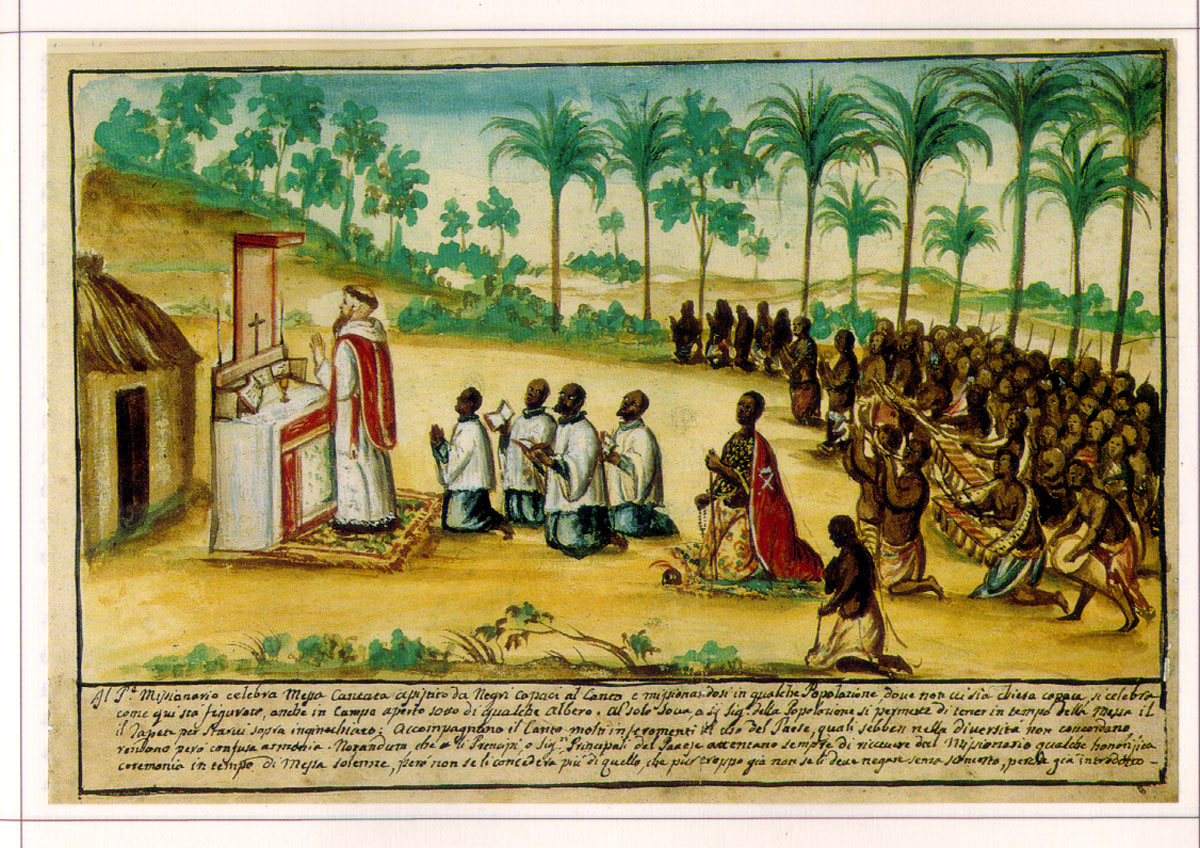The
year is 1626, and I write this account of my enslavement from Bahia, Brazil. My
story of enslavement is in reality a story of trade--trade that took me from a
position of nobility, to an invited guest to Portugal, to a slave trader, and eventually to a person of bondage. I was born in the capital city of the Kingdom
of Kongo, Sao Salvador, nearly 40 years ago. My father was a member of the
royal court and his father before him an advisor to king Alfonso. We enjoyed
relative prosperity in our status, and enslavement was never on my mind. As a
child I encountered slavery on a daily basis. The city of Sao Salvador is
surrounded by large agricultural plantations, in order to cut down on the
transportation costs of agricultural goods from distant rural villages. These
plantations use the labor of enslaved men, but it is a type of enslavement that
differs from that sought by the Portuguese. It is the Kongo tradition to only
enslave foreigners who have been captured in war. Even then these slaves are
often allowed to run their self-sufficient households and can assimilate into
the villages where they work and live. These foreign-captured slaves would be
sold to the Portuguese, and they eventually began to be given as payment
replacing other forms of currency.
The
use of slaves as commodity led to an increase in the value of the Kongo slave
market. Still I felt safe from this changing world of slave trade. I even found
profit in it myself. At 18, I was sent to Portugal as a noble emissary and was
taught much about Portuguese language and culture. Twelve slaves were sent with
me to cover the cost of my visit. When I returned to Kongo, I returned to the Kongo-Portuguese
war and the assent of Pedro II to the crown. My close relations to Portugal brought me
distrustful scrutiny, and I was sent from Sao Salvador to the southern countryside to
regulate the collection of taxes in this area. This move left me with little
room for political and economic growth. It was here, in this remote location, where I
was introduced to the lucrative aspects of the slave trade. I began collaborating
with illicit Portuguese traders who worked outside of the legal Kongo slave
market. I sold war captives and undesirables in my area into bondage. As the
need for slaves grew and Kongo’s expansion and warring decreased, many nobles
like myself began to push the line of who could be enslaved. I oversaw the sale
of men and women who would’ve formerly been protected as freemen into bondage.
While I am not proud of this, it is what I felt was necessary, as the
Portuguese traders would have kidnapped people in this area anyways.
In
the end, even I could not escape the clutches of the slave trade. The conflict
between the Portuguese and Kongo rule maintained and in 1622 the Portuguese
governor of Angola, João Correia de Sousa, invaded southern Kongo, claiming that
many runaway slaves from the Angola market were hiding in this region. I, along
with a few other nobles, and many freemen were captured and taken to the Angolan
slave-shipping town of Luanda. My wife, my children, and the life I had made
for myself were now only a distant reality. I knew what lay ahead of me. I had
seen the process firsthand when I went to Portugal and the slaves who
accompanied me were tied below in the cramped bottom deck of the vessel. When I
was sent to the south, I had facilitated this process countless times, never
going onboard the ship, but knowing very well of its destination. Here I was
in a holding center waiting to board a ship which would be stopping in Maderia,
at several points along the gold coast to Soyo, and finally to Luanda before
taking off across the never-ending sea to Brazil. In a way the slave trade had
come full circle--the trader becoming the enslaved. My story is an ironic
testament to the destructive nature of the trade, and I am the prime example of
how the institute of slavery leaves no one unscathed.
Heywood, Linda M. "Slavery and its transformation in the kingdom of Kongo: 1491–1800." The Journal of African History 50, no. 01 (2009): 1-22.
Nunn, Nathan. The long-term effects of Africa's slave trades. No. w13367. National Bureau of Economic Research, 2007.
Thornton, J.K., 1983. The Kingdom of Kongo: Civil War and Transition, 1641-1718 (p. 29). Madison: University of Wisconsin Press.
Heywood, Linda M. "Slavery and its transformation in the kingdom of Kongo: 1491–1800." The Journal of African History 50, no. 01 (2009): 1-22.
Nunn, Nathan. The long-term effects of Africa's slave trades. No. w13367. National Bureau of Economic Research, 2007.
Thornton, J.K., 1983. The Kingdom of Kongo: Civil War and Transition, 1641-1718 (p. 29). Madison: University of Wisconsin Press.










